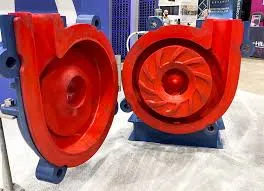English
- Afrikaans
- Albanian
- Amharic
- Arabic
- Armenian
- Azerbaijani
- Basque
- Belarusian
- Bengali
- Bosnian
- Bulgarian
- Catalan
- Cebuano
- Corsican
- Croatian
- Czech
- Danish
- Dutch
- English
- Esperanto
- Estonian
- Finnish
- French
- Frisian
- Galician
- Georgian
- German
- Greek
- Gujarati
- Haitian Creole
- hausa
- hawaiian
- Hebrew
- Hindi
- Miao
- Hungarian
- Icelandic
- igbo
- Indonesian
- irish
- Italian
- Japanese
- Javanese
- Kannada
- kazakh
- Khmer
- Rwandese
- Korean
- Kurdish
- Kyrgyz
- Lao
- Latin
- Latvian
- Lithuanian
- Luxembourgish
- Macedonian
- Malgashi
- Malay
- Malayalam
- Maltese
- Maori
- Marathi
- Mongolian
- Myanmar
- Nepali
- Norwegian
- Norwegian
- Occitan
- Pashto
- Persian
- Polish
- Portuguese
- Punjabi
- Romanian
- Russian
- Samoan
- Scottish Gaelic
- Serbian
- Sesotho
- Shona
- Sindhi
- Sinhala
- Slovak
- Slovenian
- Somali
- Spanish
- Sundanese
- Swahili
- Swedish
- Tagalog
- Tajik
- Tamil
- Tatar
- Telugu
- Thai
- Turkish
- Turkmen
- Ukrainian
- Urdu
- Uighur
- Uzbek
- Vietnamese
- Welsh
- Bantu
- Yiddish
- Yoruba
- Zulu
Telephone: +86 13120555503
Email: frank@cypump.com
Nov . 11, 2024 03:19 Back to list
Efficient Wastewater Pumping Solutions for Modern Sewage Management Systems
Understanding Sewage Ejection Systems Importance, Functionality, and Applications
Sewage ejection systems play an essential role in modern sanitation management, particularly in areas where the natural flow of sewage is insufficient for proper drainage. These systems are particularly vital in residential and commercial buildings that are situated below the main sewer line or in low-lying areas. By understanding the importance, functionality, and applications of sewage ejection systems, we can appreciate their contribution to effective waste management and public health.
Importance of Sewage Ejection Systems
The primary purpose of a sewage ejection system is to transport wastewater from lower elevations to the main sewer lines or septic systems. When a building is located below the level of the city sewage system, gravity alone cannot facilitate proper drainage. This can lead to the accumulation of waste, resulting in hygiene issues, unpleasant odors, and potential health hazards. Hence, sewage ejection systems become a critical component of the plumbing infrastructure.
Moreover, these systems help in preventing backflow, which can cause severe contamination of potable water supplies. By efficiently removing sewage and wastewater, ejection systems contribute to a cleaner environment and protect public health. In areas prone to flooding or heavy rainfall, sewage ejection systems also mitigate the risk of sewage overflows, helping to maintain sanitary conditions.
Functionality of Sewage Ejection Systems
A typical sewage ejection system consists of several key components an ejector pump, a holding tank, and a discharge pipe
. The ejector pump is the heart of the system, responsible for driving the wastewater from the holding tank into the main sewer line.1. Ejector Pump The pump is designed to handle solids and liquids, making it effective for residential settings where waste can include toilet paper and other non-dissolvable materials. When the wastewater reaches a certain level in the holding tank, a float switch activates the pump, which then ejects the waste into the sewer line under pressure.
2. Holding Tank This tank collects wastewater from various fixtures, such as sinks, showers, and toilets. The size of the holding tank depends on the expected volume of sewage, and it is typically constructed from durable materials designed to withstand the corrosive nature of sewage.
sewage ejection system

3. Discharge Pipe The discharge pipe carries the treated waste from the ejector pump to the main sewer line. This pipe must be installed at a specific angle to facilitate effective drainage and prevent blockages.
Applications of Sewage Ejection Systems
Sewage ejection systems are utilized in various applications, each tailored to meet specific waste management needs. Here are some common scenarios where these systems are indispensable
- Residential Installations In homes built on sloped terrain or in basements below the sewer line, sewage ejection systems are necessary to manage wastewater effectively.
- Commercial Facilities Restaurants, hotels, and shopping centers often have multiple sinks and bathrooms that generate large volumes of wastewater. Ejection systems ensure smooth operations by preventing waste accumulation.
- Industrial Settings Factories and manufacturing plants may require specialized sewage ejection systems to handle significant quantities of industrial waste, which often involves solids and chemicals that typical systems might not manage effectively.
Conclusion
In summary, a sewage ejection system is a critical component of modern wastewater management, particularly for buildings located below the main sewer line. By understanding its function and importance, as well as its varied applications in residential, commercial, and industrial contexts, we can appreciate the role these systems play in promoting public health and environmental safety. As urban areas expand and face challenges related to waste management, the relevance of efficient sewage ejection systems will continue to grow, highlighting the need for ongoing innovation and maintenance in this essential infrastructure.
-
ISG Series Vertical Pipeline Pump - Chi Yuan Pumps Co., LTD.|High Efficiency, Energy Saving, Low Noise
NewsJul.30,2025
-
ISG Series Vertical Pipeline Pump- Chi Yuan Pumps|High Efficiency&Low Noise
NewsJul.30,2025
-
ISG Series Vertical Pipeline Pump-Chi Yuan Pumps Co., LTD.|High Efficiency&Energy Conservation
NewsJul.30,2025
-
ISG Series Vertical Pipeline Pump - Chi Yuan Pumps Co., LTD.|Advanced Hydraulic Design&Energy-Efficient Solutions
NewsJul.30,2025
-
ISG Series Vertical Pipeline Pump - Chi Yuan Pumps Co., LTD.
NewsJul.30,2025
-
ISG Series Vertical Pipeline Pump - Chi Yuan Pumps Co., LTD.|energy-efficient fluid handling&industrial durability
NewsJul.30,2025










